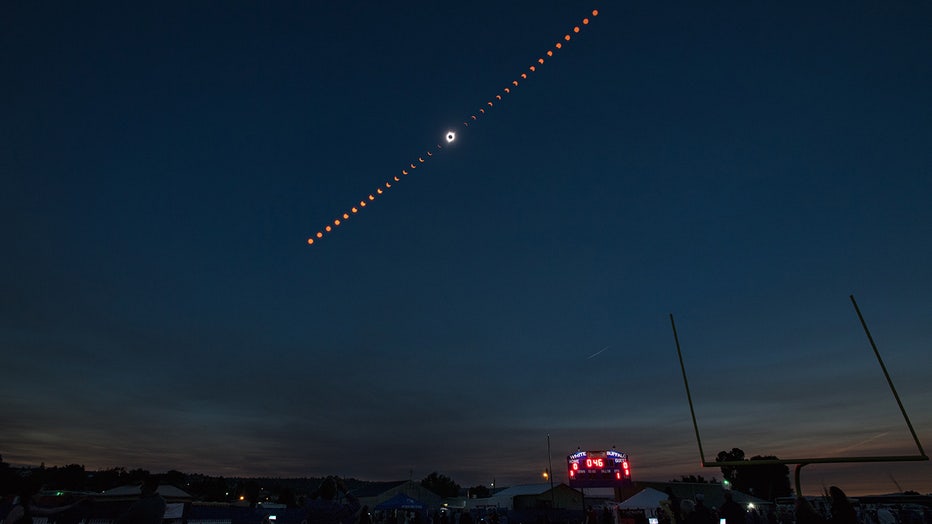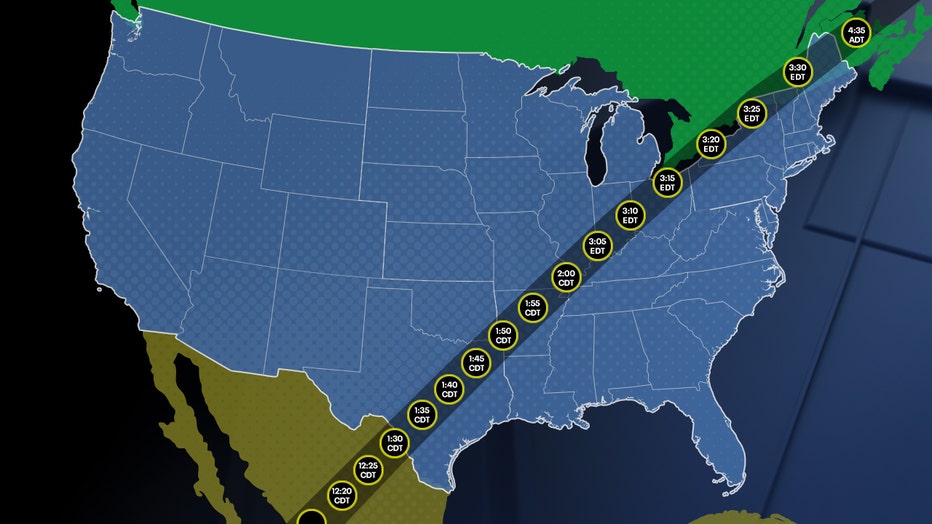What an eclipse looks like from space, and why you should see one (from Earth)
Astronaut's perspective on the solar eclipse
Would you rather see an eclipse from space or from here on Earth? In this interview facilitated by Sonic, here’s the perspective of Col. Terry Virts, one of the few human beings who has done both.
HUDSON, Ohio - Millions of people are making plans to find the best spot to enjoy next week’s total solar eclipse. But a handful of humans already know they’ll have the most unique vantage point of all.
The astronauts aboard the International Space Station will get a global view of the eclipse. From 260 miles up, they’ll be able to see the moon’s entire shadow as it moves across the whole continent of North America, from Mexico to Maine.
They won’t be able to experience the sudden plunge into darkness that Earth-bound viewers in the path of totality will enjoy, but as they orbit at 17,500 miles per hour, they already get a sunrise or sunset every 45 minutes.
Plus, the space station crew will also have one advantage over those of us on the ground – no concerns about weather. The forecast for next week is calling for clouds in some locations, but that’s not an issue from space, where they’ll look down on a "big black spot," as former astronaut Col. Terry Virts describes it.
Virts recalled seeing a solar eclipse over the North Atlantic during his time as commander of the International Space Station.
"There was this big black spot on the planet, and it was kind of unsettling," he told FOX TV Stations. "Actually, I'm glad we knew there was going to be an eclipse, because if you had just looked out the window and saw this black spot moving across Earth, that would have been a little disconcerting. But thankfully, NASA warned us – ‘Hey, there's an eclipse.’ And it was really cool to see that from a very different perspective."
Virts said he also got to enjoy a more traditional view of the 2017 total solar eclipse – on the ground – from Bend, Oregon, which was in the path of totality.
"That was spectacular," he said of the experience. "It was really amazing."
RELATED: How to get the best view of the solar eclipse

This composite image shows the progression of a total solar eclipse over Madras, Oregon on Monday, Aug. 21, 2017. (NASA/Aubrey Gemignani)
The most important thing for eclipse viewing is to make sure you’ve got the appropriate protective eyewear, Virts stressed. But he also encouraged those in the path to look down as much as they look up.
"If there's wildlife around, try and notice what the birds and the dogs and the animals think," he offered. "They don't know that the eclipse is coming, so they kind of freak out like, ‘Why did daytime turn into night?’ That was really amazing for me to see how the wildlife reacted."

NASA's Earth Polychromatic Imaging Camera (EPIC) tracked the path of the total solar eclipse across North America on Aug. 21, 2017. NASA scientists can use these observations to better understand how clouds affect Earth’s energy balance. (NASA Goddar
The bottom line, though, from one of the only people to have seen a total eclipse from both space and Earth, is just to make an effort to see it.
"Go watch this eclipse," Virts added. "It won't happen again for 20 years in the States."
RELATED: Solar eclipse 2024 food deals and freebies that can’t be overshadowed
Total solar eclipse path
The April 2024 solar eclipse will be visible, at least in part, to nearly everyone in the U.S. But the path of totality – where the moon will completely block the sun – is a 115-mile-wide region that stretches from southern Texas up through Ohio, then over to northern Maine.

Projected path and time of totality for the 2024 total solar eclipse over the U.S.
Cities in the path of totality include:
- Austin, Texas
- Dallas, Texas
- Little Rock, Arkansas
- Carbondale, Illinois
- Indianapolis, Indiana
- Cleveland, Ohio
- Buffalo, New York
- Plattsburgh, New York
- Presque Isle, Maine
The farther you are from that path, less and less of the sun will appear to be blocked.
What time is the solar eclipse?
Southern Texas will see the peak of totality first, around 1:30 p.m. Central Daylight Time. Then Dallas at 1:42 p.m., with the time getting later and later as the moon’s shadow moves north. Indianapolis will see the peak around 3:05 p.m. Eastern Daylight Time; Cleveland at 3:15 p.m., and northern Maine around 3:30 p.m.
However, it will take several hours for the moon to move across the sun, so the actual eclipse event will start just over an hour before the peak of totality, with more and more of the sun slowly being blocked.
How long is the solar eclipse?
Again, that depends on where you are. Those closest to the center of the path will see total darkness for about four minutes at the peak of totality.
But because the moon moves slowly across the sun’s path, the entire eclipse event – from when the moon first clips the sun until the time it clears – will last from 90 minutes to over two hours for those in the path of totality.
When is the next total solar eclipse?
After 2024, NASA says, the next total solar eclipse visible from any point in the contiguous United States will occur in 2044. Totality will only be visible from North Dakota and Montana.
The next total solar eclipse that will travel across the lower 48 states from coast to coast is in 2045.
Editor's note: This article has been updated to reflect the correct date for the next ecplise.

